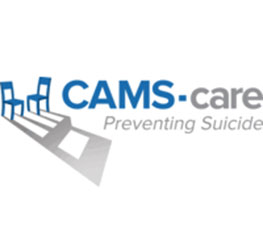The professional home for health service psychologists.
Join a community of 15,000 psychologists and trainees.
Learn it today. Apply it tomorrow.
Connecting you to what you need in your career.
Making a difference.
Jobes, D.A. (2020). Commonsense Recommendations for Standard Care of Suicidal Risk. Journal of Health Service Psychology, 46(4). https://doi.org/10.1007/s42843-020-00020-3
Suicide is the tenth leading cause of death in the United States, yet many mental health providers have limited academic-based training in its assessment and treatment. A commonsense approach to caring for suicide risk includes (a) identification, (b) assessment, (c) safety planning with lethal means discussion and offer of resources, and (d) the use of caring contact. In addition, it is optimal to explore the specifics of the patient’s suicidal struggle to better understand, manage, and treat those issues and problems that compel the patient to consider suicide. Examples of the phrasing for interventions and clinically relevant commentary are provided.
Beck, A. T., & Steer, R. A. (1991). Manual for Beck Scale for Suicide Ideation. San Antonio, TX: Psychological Corporation.
Beck, A. T., & Steer, R. A. (1993). Manual for Beck Hopelessness Scale. San Antonio, TX: Psychological Corporation.
Berman, A. L., Jobes, D. A., & Silverman, M. M. (2006). Adolescent suicide: Assessment and Treatment 2nd ed. Washington, DC: American Psychological Association Press.
Blanchard, M. & Farber, B. A. (2018). “It is never okay to talk about suicide:” Patients’ reasons for concealing suicidal ideation in psychotherapy. Psychotherapy Research. https://doi.org/10.1080/10503307.2018.1543977
Bostwick, J. M., & Pankratz, V. S. (2000). Affective disorders and suicide risk: A reexamination. American Journal of Psychiatry, 157, 1925–1932.
Bryan, C. J., Stone, S. L., & Rudd, M. D. (2011). A practical, evidence-based approach for means-restriction counseling with suicidal patients. Professional Psychology: Research and Practice, 42, 339–346.
Bryan, C. J., Mintz, J., Clemans, T. A., Leeson, B., Burch, T. S., Williams, S. R., Maney, E., & Rudd, M. D. (2017). Effect of crisis response planning vs. contracts for safety on suicide risk in U.S. Army Soldiers: a randomized clinical trial. Journal of Affective Disorders, 212, 64-72.
Bryan, C. J. & Rudd, M. D. (2018). Brief Cognitive-Behavior Therapy for Suicide Prevention. New York: The Guilford Press.
Czyz, E. K., Berona, M. S., & King, C. A. (2016). Rehospitalization of Suicidal Adolescents in Relation to Course of Suicidal Ideation and Future Suicide Attempts. Psychiatric Services, 67, 332–338. doi: 10.1176/appi.ps.201400252
Drapeau, C. W., & McIntosh, J. L. (2020). U.S.A. suicide 2018: Official final data. Washington, DC: American Association of Suicidology, downloaded from https://www.suicidology.org.
Ellis, T. E., & Newman, C. F. (1996). Choosing to live: How to defeat suicide through cognitive therapy. Oakland, CA: New Harbinger.
Horowitz, L. M., Bridge, J. A., Teach, S. J., Ballard, E., Klima, J., Rosenstein, D. L., Wharff, E. A., Ginnis, K., Cannon, E., Joshi, P., & Pao, M. (2012). Ask suicide-screening questions (ASQ): A brief instrument for the pediatric emergency department. Archives of Pediatric and Adolescent Medicine, 166, 1170-1176.
Horowitz, L. M., Snyder, D. J., Boudreaux, E. D., He, J. P., Harrington, C. J., Cai, J. Claassen, C. A., Salhany, J. E., Dao, T., Chaves, J. F., Jobes, D. A., Merikangas, K. R., Bridge, J. A., & Pao, M. (2020). Validation of the Ask Suicide-Screening Questions (ASQ) for Adult Medical Inpatients: A Brief Tool for All Ages. Psychosomatics: The Journal of Consultation-Liaison Psychiatry. https://doi.org/10.1016/j.psym.2020.04.008
Jobes, D. A. (2016). Managing Suicidal Risk: A Collaborative Approach 3rd Ed. New York: The Guilford Press.
Jobes, D. A. (2017). Clinical assessment and treatment of suicidal risk: A critique of contemporary care and CAMS as a possible remedy. Practice Innovations, 2, 207-220. https://psycnet.apa.org/doi/10.1037/pri0000054
Jobes, D. A., & Berman, A. L. (1993). Suicide and malpractice liability: Assessing and revising policies, procedures, and practice in outpatient settings. Professional Psychology: Research and Practice, 24, 91-99.
Jobes, D. A., Gregorian, M. J., & Colborn, V. A. (2018). A stepped care approach to clinical suicide prevention. Psychological Services, 15, 243-250. http://dx.doi.org/10.1037/ser0000229
Jobes, D. A. & Joiner, T. E. (2019). Reflections on suicidal ideation. Crisis—The Journal of Crisis Intervention and Suicide Prevention, 40, 227-230. https://doi.org/10.1027/0227-5910/a000615
Jobes, D. A., & Maltsberger, J. T. (1995). The hazards of treating suicidal patients. In M. Sussman (Ed.), A perilous calling: The hazards of psychotherapy practice (pp. 200-214). New York: John Wiley.
Jobes, D. A., Rudd, M. D., Overholser, J. C., & Joiner, T. E. (2008). Ethical and competent care of suicidal patients: Contemporary challenges, new developments, and considerations for clinical practice. Professional Psychology: Research and Practice, 39, 405-413.
Khan, A., Khan, S., Kolts, R., & Brown, W. A. (2003). Suicide rates in clinical trials of SSRI’s, other antidepressants, and placebo: Analysis of FDA reports. American Journal of Psychiatry, 160, 790–792.
Kraft, T. L., Jobes, D. A., Lineberry, T. L., & Conrad, A. K. (2010). Brief report: Why
suicide? Perceptions of suicidal inpatients and reflections of clinical researchers. Archives of Suicide Research, 14, 375-382.
Lambert, M. J., Hansen, N. B, Umphress, V., Lunnen, K., Okiishi, J., Burlingame, G., et al. (1996). Administration and scoring manual for the Outcome Questionnaire (OQ 45.2). Wilmington, DE: American Professional Credentialing Services.
Linehan, M. M. (1993). Cognitive-behavioral treatment of borderline personality disorder. New York: The Guilford Press.
LoParo, D., Florez, I. A., Valentine, N., & Lamis, D. A. (2018). Associations of suicide prevention trainings with practices and confidence among clinicians at community mental health centers. Suicide and Life-Threatening, 49, 1148-1156. https://DOI10.1111/sltb.12498
Luxton, D.D., June, J. D., & Comtois, K. A. (2013). Can post-discharge follow-up contacts prevent suicide and suicidal behavior? A review of evidence. Crisis, 34, 32–41. http://dx.doi.org/10.1027/0227-5910/a000158
National Action Alliance for Suicide Prevention: Transforming Health Systems Initiative Work Group. (2018). Recommended standard care for people with suicide risk: Making health care suicide safe. Washington, DC: Education Development Center, Inc.
Qin, P., & Nordentoft, M. (2005). Suicide risk in relation to psychiatric hospitalization: Evidence based on longitudinal registers. Archives of General Psychiatry, 62, 427–432.
Shneidman, E. S. (1985). The Definition of Suicide. New York: Wiley.
Sommers-Flanagan, J. (2018). Conversations about suicide: Strategies for detecting and assessing suicide Risk. Journal of Health Service Psychology. 44, 33-45. https://doi.org/10.1007/BF03544661
Stanley, B., Brown, G.K., Brenner, L.A., Hanga, C., Galfalvy, H. C., Currier, G. W., … Green, K. L. (2018). Comparison of safety planning intervention with follow-up vs. usual care of suicidal patients treated in the emergency department. JAMA Psychiatry, 75, 894-900. https://Doi10.1001/jamapsychiatry.2018.1776
Substance Abuse and Mental Health Services Administration (2018). Suicidal thoughts and behaviors among adults (NSDUH Annual National Report). Retrieved from https://www.samhsa.gov/data/report/2017-nsduh-annual-national-report
Wenzel, A., Brown, G. K., & Beck, A. T. (2009). Cognitive therapy for suicidal patients: Scientific and clinical applications. Washington, DC: American Psychological Association.
Copyright © 2025 All rights reserved. National Register of Health Service Psychologists









